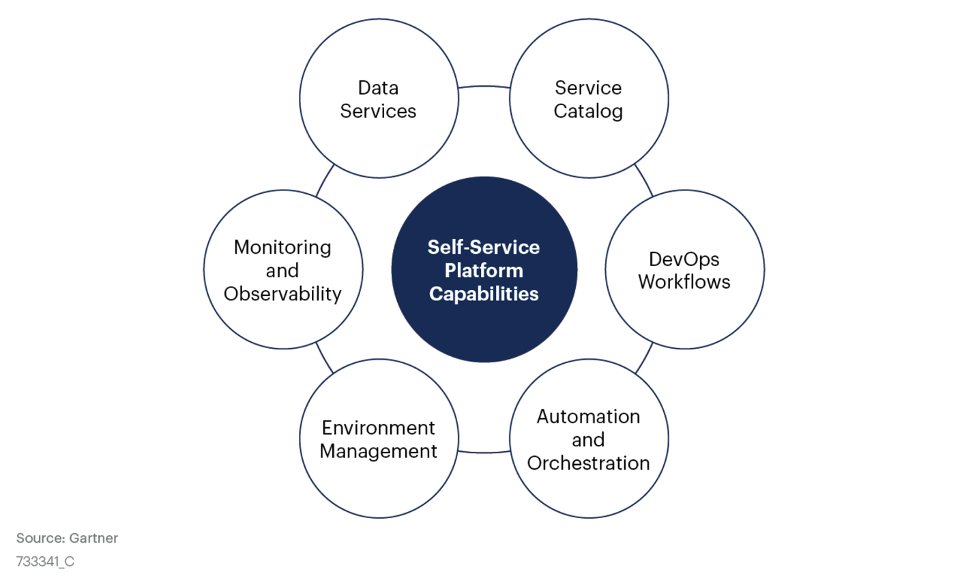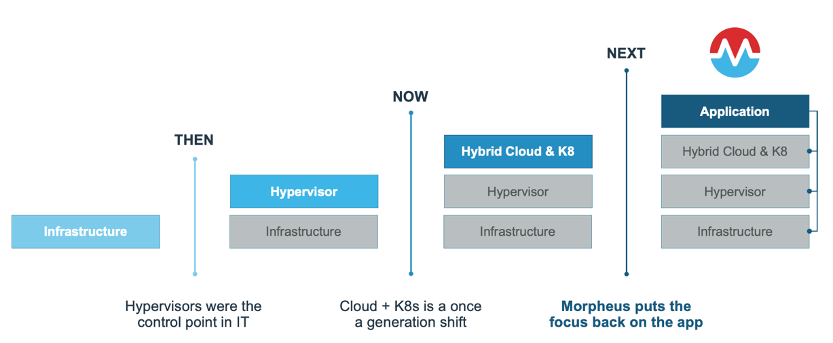
Every year around this time, tech vendors and industry analysts love to put pen to paper with ‘predictions.’ But I’m pretty sure nobody saw 2020 going down the path it did one year ago. Without a doubt, the COVID pandemic is definitely driving change. When Gartner asked CEOs what effect this crisis will have on the pace of technology transformation in their companies, 77% responded that it would significantly accelerate transformation.1
Pandemic-related pressures around people and finances coupled with remote work challenges are forcing companies of every size to quickly become more efficient with IT. This in turn has shone a bright spotlight on the need for a better approach to automation and orchestration.
So how do we best tackle what’s next? I recently sat down with some of the Morpheus brain trust’including co-founders Brian Wheeler and Dave Estes along with Field CT Adam Hicks’to bandy about some thoughts on what to expect in 2021.
Here are a few of the highlights, building on today’s realities with just a little crystal-ball gazing.
Developer demand for self-service and the rise of PlatformOps
Digital transformation initiatives over the last few years have revealed that developer tooling and application structure are reaching beyond the capabilities of traditional IT. If 2020 taught us anything, it’s how struggle can bring people together. So rather than this delivery gap bringing more friction, we see it as a catalyst to accelerate collaboration across teams and technology silos.
Gartner defines PlatformOps as the development, deployment, and operational management construct that enables software delivery teams inside and outside IT to build and operate their own products.2 Effectively, it’s an evolution of IT in response to developers who’ve become used to self-service interfaces provided by the public cloud.

Research indicates that by 2025, 75% of large enterprises will build self-service infrastructure platforms to enable rapid product innovation, up from 15% in 2020.3 This is also where AIOps will increasingly come into play, as machine learning advances impact how platform teams can both predict and remediate detect anomalies across a number of fronts.
Given that over 90% of enterprises are using three or more hypervisors, container platforms, and/or public cloud providers, it’s easy to see how important it will be to have a centralized control plane and common approach to developer self-service.
Infrastructure as code becoming ‘everything as code’
As development teams ‘shift left’ and take a more active role in operations concerns, we’re also seeing IT embrace declarative, codified approaches to their domain.
Infrastructure-as-code technologies like Terraform have taken hold but have also revealed gaps and opportunities to bridge infrastructure and higher-level application needs, particularly on-premises. Friction can still be found where infrastructure creation meets application configuration and day-two operations. This is going to drive not just infrastructure-as-code but the need for policy-as-code, security-as-code, governance-as-code, and so on in conjunction with GitOps style workflow.
We think you’ll also see more templatization with application stack creation that describes the end result and all dependencies, greatly reducing the need to tinker with various cloud providers, platforms, hypervisors, and other technology elements.
This is a sensible shift’one where you are getting the end result declaratively and consistently complete with implementation of all associated operational concerns.
Getting attention back on the application!
As we parlay into a PlatformOps orientation where everything can be represented as code, we see continued commoditization of infrastructure as well as eventual commoditization of enabling technologies like hypervisors, cloud-based IaaS, and even container orchestrators.
Case in point: Five years ago, container platforms were still relatively new for most IT organizations. Now we have a maturing Kubernetes ecosystem which is still too complex for many I&O teams. On a parallel track, more and more app teams are leveraging cloud-native platform-as-a-service (PaaS) services and serverless functions as they build next generation applications.
It’s no surprise that when discussing tackling the I&O skills gap, Gartner notes that less than 40% of organizations maintain an up-to-date inventory of skills and competencies.4. Ultimately, we may see Kubernetes becoming a feature or commodity for platform engineering frameworks that can also support virtual machines and PaaS services.

Looking beyond 2021, the focus on application delivery will likely lead to advancements in value stream tooling and mapping of processes from ideation to release and operation.
Onward ‘ with continuing change and challenges
While we remain optimistic about the future, the road forward will not be without its challenges.
In its own recent predictions, IDC believes that by the end of 2021, based on lessons learned, 80% of enterprises will put a mechanism in place to shift to cloud-centric infrastructure and applications twice as fast as before the pandemic. At the same time, they also predict that by 2023, half of enterprises’ hybrid workforce and business automation efforts will be delayed or will fail outright due to underinvestment in building IT/Sec/DevOps teams with the right tools/skills.5
People and process is always as important as tools and technology. As platforms and tools continue to move ahead, we look forward to working with our customers to unify hybrid IT with a persona-based platform that helps teams collaborate more effectively.
If any of this strikes a cord, we’d love a chance to talk to you about your plans for 2021. Leave a comment or request a demo to see if we can help accelerate your journey.
1 2 Reinvent Your Digital Foundations to Drive the Resilient Enterprise; Gartner; 2020
3 How to Build Agile Infrastructure Platforms That Enable Rapid Product Innovation, Gartner, Inc.; Dec. 2020
4 Scaling for Digital Success ‘ Tackling the I&O Skills Gap; Gartner, Inc.; 2020
5 Top 10 Worldwide Services 2021 Predictions; IDC FutureScape; Dec. 2020